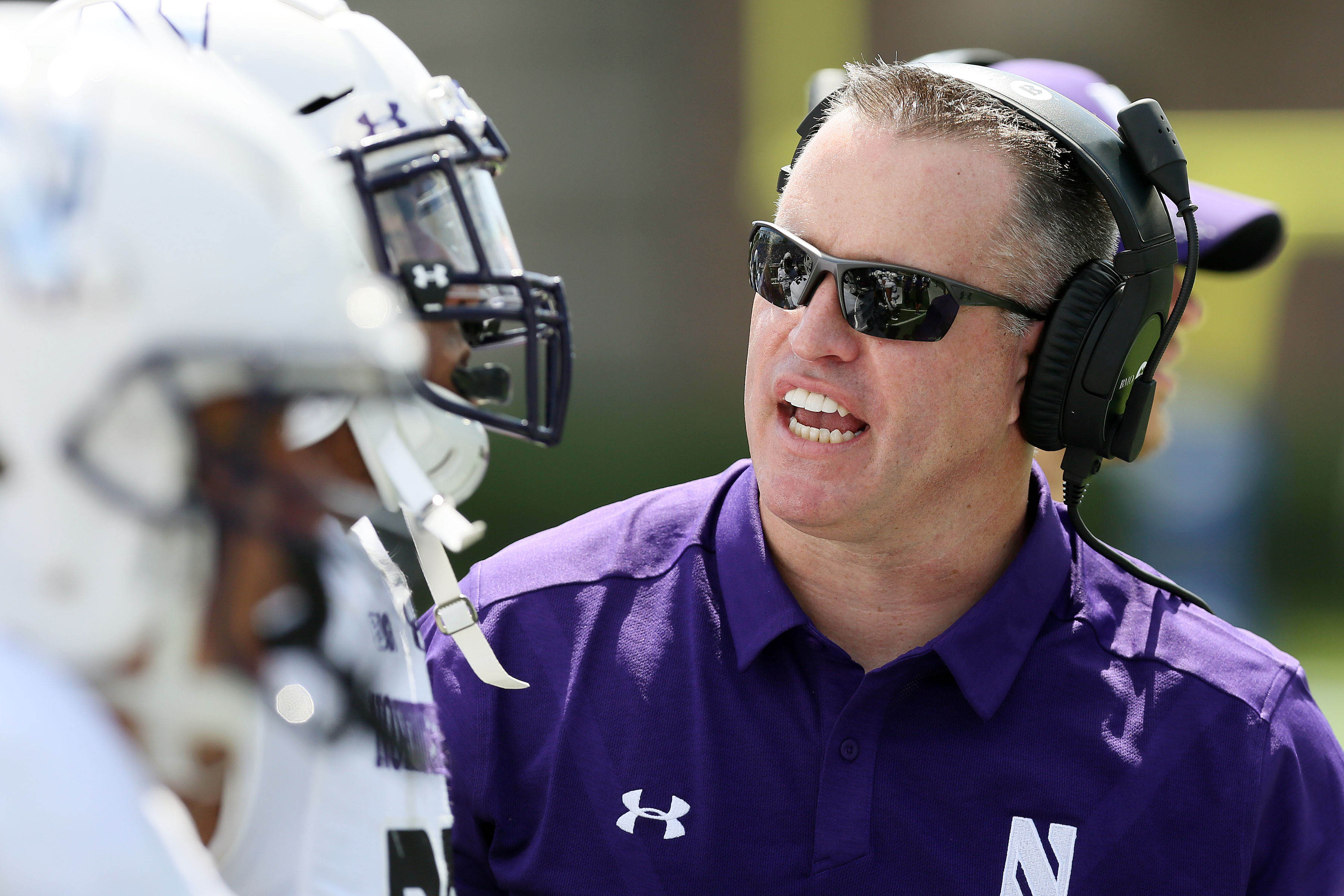Ad Disclosure

Battle for Second: Why the improved depth behind Wisconsin is a good thing for the B1G West
Nobody really cares about second place. To quote Reese Bobby of Talladega Nights, “if you ain’t first, you’re last.”
Most of the college football preseason is spent arguing about winners. Division winners. Conference winners. College Football Playoff winners. There isn’t much desire to talk about teams that are expected to have average years.
But in the B1G West, it’s a little bit more difficult to have the typical conversation that keeps everyone bickering until the start of the season.
Wisconsin is going to win the West, probably by a couple of games. It’s as close to a sure-fire prediction as Floyd Mayweather beating Conor McGregor inside a boxing ring. The Badgers are just on an entirely different level than the rest of their opponents in the division.
So, in the case of the B1G West, trying to determine the second-best team in the division really is the more interesting topic.
Right now, there are five teams — Iowa, Minnesota, Nebraska, Northwestern and Purdue — creating a logjam in the middle of the B1G West. And it’s no exaggeration that any one of those programs could finish with the second-best record in the division this fall.
Illinois, which has won just two conference games over the last two seasons, is the outsider.

Iowa arguably has the most dominant tight end in the conference in Noah Fant, and quarterback Nate Stanley is receiving national attention after a breakout season in 2017. Minnesota has added quality depth to its offensive line, an issue that plagued the Gophers in P.J. Fleck’s inaugural season.
Scott Frost is an offensive guru who could give Nebraska that jolt its been seeking since the 1990s. Defensive lineman Joe Gaziano and linebacker Paddy Fisher are All-B1G talents on a solid Northwestern defense. Purdue is going to produce a potent passing attack and Jeff Brohm plans to attempt 50 trick plays.
Remove the two extremes — Wisconsin and Illinois — and it might be the most well-balanced division in college football as far as comparable talent. That’s the feeling headed into the season at least.
That’s a really healthy situation for the future of the B1G West.
Sure, you could make the argument that having one team dominate on a yearly basis isn’t the best of circumstances — the Badgers have won three of the last four West titles, twice by multiple games — but the division is in a far better position than it was a few years ago.
Since the B1G split into the directional divisions in 2014, the West has been somewhat of a laughingstock across the country. Iowa, Northwestern — maybe even Minnesota to an extent –provided some sense of integrity and stability in the division, but it was still immensely inferior to the East, loaded with Ohio State, Penn State, Michigan State and Michigan
With the new head coaches that have arrived in the last two years, that’s all changed.
Nebraska isn’t going to be a mediocre program satisfied with a simple bowl appearance. Minnesota and Purdue are starting to attract more high-caliber recruits. All three of those teams are going to be factors soon.
Maybe Illinois even sneaks into the picture in some capacity.

The point is, Wisconsin isn’t going to be the runaway favorite much longer. The B1G may find a more competitive balance between the East and West in the near future as well, which would be an added bonus for the league and commissioner Jim Delany.
Finishing second in the West this year, in all honesty, doesn’t really matter. Obviously it does to the players, coaches and even the fans, but in the grand scheme of college football, second place doesn’t get you very far.
To use the same movie quote twice in the same story, “if you ain’t first, you’re last.”
The real story is that, for the first time since the B1G split into the directional divisions, there’s some real competitiveness in the West. Spots No. 2 through No. 6 are wide open. And if Iowa, Minnesota, Nebraska, Northwestern and Purdue beat up on each other week-in, week-out and possibly steal a few victories from the East in crossover contests, the division will build some much-needed credibility.
If the 2018 season is as competitive among those five teams as we expect, it could be the start of the West’s ascension into a prominent division in college football. Some of those programs will begin challenging Wisconsin for its seat atop the West and perhaps earn an opportunity to win a league title.
Then we can finally have an interesting discussion about naming a division winner out West again.
Dustin grew up in the heart of Big Ten country and has been in sports media since 2010. He has been covering Big Ten football since 2014. You can follow him on Twitter: @SchutteCFB